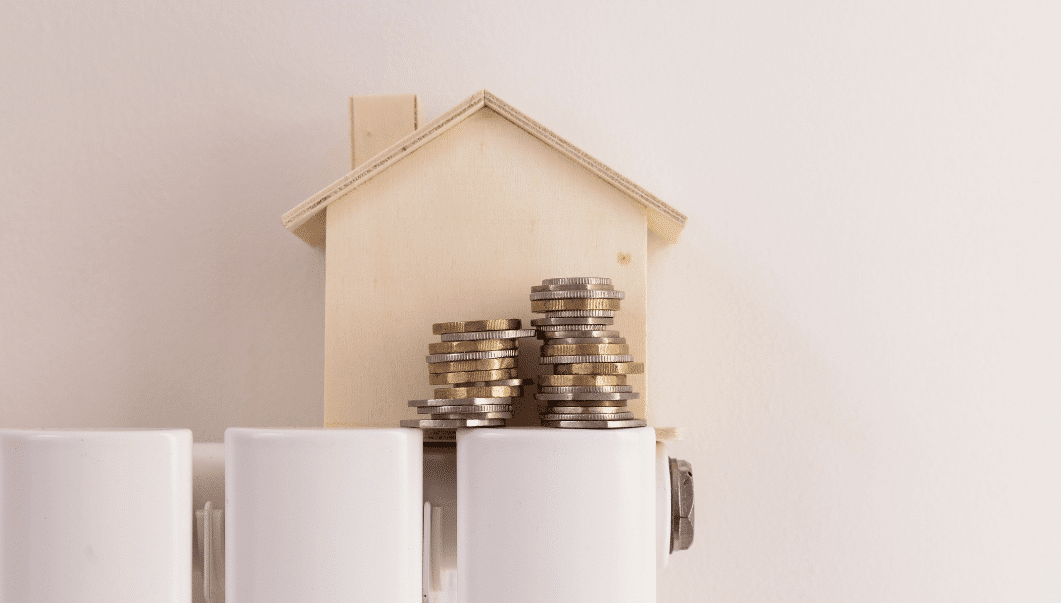
The Build-To-Order (BTO) system in Singapore is a government initiative that aims to provide affordable and quality public housing for Singaporeans. Under the BTO system, flats are built in response to demand, with construction starting only after a certain percentage of units in a project have been booked. This system allows the government to better manage the supply of public housing and ensure that flats are efficiently allocated to those who need them. BTO projects offer a range of flat types and sizes to cater to the diverse needs of residents, from young couples to multi-generational families. This ensures that there is something suitable for everyone, promoting inclusivity and social cohesion. The BTO system has proven to be successful in meeting the housing needs of Singaporeans and continues to be an integral part of the country’s housing strategy.
Brief explanation of BTO system
The Built-To-Order (BTO) system is a housing program introduced by the government to provide affordable public housing options in Singapore. Under this system, new housing developments are planned and built based on the demand expressed by potential homebuyers. The housing units, known as flats, are sold directly to eligible Singaporean citizens and permanent residents at subsidized prices. The development costs of BTO projects are funded by the government and include land acquisition, infrastructure development, and construction expenses. To further assist eligible buyers in purchasing their own homes, various housing grants are available to provide financial support and make homeownership more accessible for Singaporeans.
Overview of BTO projects in Singapore
The Build-To-Order (BTO) program in Singapore plays a crucial role in meeting the housing demands of its growing population. BTO projects, managed by the Housing and Development Board (HDB), involve the construction of affordable residential units across various regions in Singapore. Some of the popular BTO locations include Queenstown, Choa Chu Kang, and Tengah. These projects aim to provide Singaporeans with quality homes that cater to their diverse needs while promoting sustainable urban living. Through strategic planning and development, the BTO program continues to contribute to the vibrant and inclusive housing landscape of Singapore.
Importance of BTO in meeting housing demand
The build-to-order (BTO) housing scheme plays a crucial role in meeting the ever-growing demand for housing in Singapore. With a rapidly increasing population and limited land resources, the demand for flats far exceeds the supply available. The BTO scheme allows potential buyers to apply for a flat in advance, based on their preferences and needs. By doing so, the Housing and Development Board (HDB) can accurately gauge the demand for flats in different locations and plan their construction accordingly. This helps to prevent oversupply or shortages of flats in certain areas. The BTO scheme also ensures that there is a streamlined supply chain and inventory management system in place, enabling efficient construction and delivery of flats to meet the housing demand.
Key Takeaways
- Introduction to BTO Singapore: BTO is a government initiative for affordable public housing in Singapore, constructed based on demand to efficiently allocate flats.
- Brief Explanation of BTO: BTO offers affordable flats to Singaporean citizens and PRs, with government funding for development and grants for financial support.
- Overview of BTO Projects: BTO projects are managed by HDB and aim to provide diverse housing options across Singapore’s regions.
- Importance of BTO in Meeting Demand: BTO helps meet housing demand by allowing applicants to apply based on preferences and needs, ensuring efficient supply management.
- Types of BTO Projects: BTO projects are available in various regions, catering to different preferences, such as Queenstown, Choa Chu Kang, and Tengah.
- Comparison of Locations: Consider factors like location, amenities, and accessibility when choosing a BTO flat.
- BTO Process and Eligibility: The BTO process involves application, selection, flat booking, and construction; eligibility criteria include income and family nucleus.
- Housing Grants for BTO Buyers: Various housing grants, such as EHG, AHG, and SHG, are available to make BTO flats more affordable.
- Public Perception and Challenges: Public perception of BTO housing varies, with concerns about oversupply, location allocation, and construction costs.
- Development Costs and Affordability: Development costs include construction, design, and land costs, and affordability depends on grants, financing options, and property market conditions.
Types of BTO Projects: Queenstown, Choa Chu Kang
Are you a prospective homeowner in Singapore looking for affordable housing options? If so, you may have come across the term Build-To-Order or BTO. The BTO system launched by the Housing and Development Board (HDB) offers Singaporeans the opportunity to purchase affordable and newly built flats.
Analysis of BTO projects in different regions
The HDB BTO projects are spread across various regions, including both mature and non-mature estates. Prime locations such as Queenstown, Choa Chu Kang, and Tengah offer a range of estates to choose from. Whether you prefer the bustling city life or a serene neighborhood, there is a BTO project for everyone’s taste and preference.
In Queenstown, you can find BTO flats that are located in close proximity to amenities like shopping malls and parks. Choa Chu Kang offers a mix of HDB flats, executive condominiums, and private residences. Tengah, Singapore’s newest town, is set to be a “Forest Town” and is designed with sustainability in mind.
Comparison of location, amenities, and accessibility
When choosing a BTO flat, it’s important to consider the location, amenities, and accessibility. Queenstown, being a mature estate, offers a wide range of amenities such as schools, healthcare facilities, and recreational spaces. Choa Chu Kang, on the other hand, boasts a tranquil environment with lush greenery and ample recreational options.
In terms of accessibility, both Queenstown and Choa Chu Kang have excellent transport connectivity, with MRT stations and major highways nearby. Tengah, being a new town, is expected to have well-designed transportation infrastructure to cater to its residents’ needs.
It’s worth noting that BTO flats are priced lower compared to resale flats, making them an attractive option for first-time homebuyers. The Singapore government also provides housing grants to eligible buyers, further reducing the cost of homeownership.
In summary, the BTO system in Singapore offers a variety of housing options across different regions. It’s essential to consider factors such as location, amenities, accessibility, and budget when choosing a BTO flat. With careful consideration, you can find the perfect home that meets your needs and preferences.
BTO Process and Eligibility

Step-by-step guide to BTO application and selection process
For those interested in purchasing a Build-To-Order (BTO) flat in Singapore, it’s important to understand the application and selection process. Here is a step-by-step guide to help you navigate through the process seamlessly:
- BTO Application: Submit your application during the designated application period. You can apply as an individual or in a joint application with another person.
- Selection Process: Once the application period has ended, HDB will conduct a computer ballot to determine the queue numbers of eligible applicants. The queue numbers will dictate the order in which applicants can select their flat.
- Book a Flat: If your queue number is within the given range for a particular BTO project, you will be invited to book a flat. At this stage, you can choose the unit type, location, and floor level of your preference, provided they are available.
- Built-to-Order: Once you have selected your unit, you will sign the necessary documents and make the required payment to secure your flat. The flat will be built according to the BTO timeline, which can range from a few years to several.
Eligibility criteria for BTO applicants
To be eligible for a BTO flat, you must meet certain criteria:
- Income: There are income ceilings set for BTO applicants. These ceilings ensure that the flats are accessible to a wide range of Singaporeans.
- Eligibility Conditions: There are also specific eligibility conditions such as citizenship, age, family nucleus, and previous ownership of HDB properties. These conditions ensure that those who genuinely need housing support are prioritized.
Understanding the balloting system and queue numbers
During the selection process, HDB uses a balloting system to randomly assign queue numbers to applicants. The queue numbers determine the order in which applicants can choose their flats. The percentage of flats allocated to each specific flat type is also determined through the balloting system. For example, if 70% of the flats in a BTO project are 4-room units, then 70% of the queue numbers will be reserved for applicants seeking 4-room flats.
In conclusion, the BTO system in Singapore offers a fair and transparent process for purchasing new flats. By understanding the application process, eligibility criteria, and balloting system, potential buyers can navigate the system more effectively and increase their chances of securing their desired BTO flat.
Housing Grants for BTO Buyers

In Singapore’s competitive housing market, the Build-To-Order (BTO) system is a popular option for first-time home buyers. This system allows buyers to purchase new, subsidized flats directly from the Housing & Development Board (HDB). However, the path to owning a BTO flat can seem daunting, especially with the costs involved. That’s where housing grants come in to make it more affordable and accessible.
Overview of various housing grants available for BTO buyers
The Singaporean government offers several housing grants to help BTO buyers offset the cost of purchasing a new flat. The main grant is the Enhanced CPF Housing Grant (EHG), which provides a generous subsidy of up to $80,000 for eligible first-time buyers. There are also additional subsidies available for lower-income households, such as the Additional CPF Housing Grant (AHG) and the Special CPF Housing Grant (SHG).
The process of applying for these grants is integrated into the registration for flats system. Upon successful application, the grant amount will be disbursed directly to the buyer’s CPF account, reducing the amount of cash needed upfront.
Eligibility requirements and application procedures
To be eligible for these grants, buyer must meet certain criteria. Firstly, they must be first-time applicants or have only owned one previous subsidized flat. The buyer must also form a family nucleus, which can include immediate family members or fiancé/fiancée. Additionally, Universal Design features must be incorporated into the flat, ensuring accessibility for persons with disabilities.
The application process involves submitting the necessary documents, such as proof of income and marriage certificates, through the HDB’s online portal. The lead times for approval and disbursement can vary depending on the demand and availability of flats.
Different types of grants and their benefits (logistics, highly customized)
Different types of grants cater to various needs. For instance, the AHG targets lower-income households with a subsidy amount of up to $40,000. On the other hand, the SHG provides up to $40,000 for families purchasing a flat in specific non-mature estates like Choa Chu Kang and Tengah. These grants help to make home ownership more affordable for different income groups.
In conclusion, housing grants play a crucial role in the BTO system, making homeownership more attainable for first-time buyers in Singapore. The government’s commitment to providing generous subsidies demonstrates their efforts in creating sustainable and affordable housing options for citizens.
Public Perception and Challenges: Tengah, Apartments, Singaporeans

Analysis of public perception towards BTO system
The Build-To-Order (BTO) system in Singapore’s public housing sector has received mixed reactions from the public. While many appreciate the affordable housing options it provides, there are some concerns and criticisms.
One major concern is the surplus of BTO units. Some Singaporeans worry that there is an oversupply of flats, leading to difficulties in finding buyers for their own units in the future. Another concern is the allocation of locations for BTO projects. Some feel that certain locations are more advantageous for buyers in terms of future value appreciation, while others feel disadvantaged by unfavorable locations.
The BTO system operates through a ballot system, where applicants have to wait for their turn to be allocated a flat. This waiting time can vary, depending on the demand for the particular project. Construction costs are another point of discussion, as some argue that the costs are high and need to be reduced to make housing more affordable.
Challenges and criticisms of BTO projects
Aside from public perception, there are other challenges and criticisms faced by BTO projects. One major concern is oversupply. With numerous flats being built simultaneously, there is a worry that the market might be flooded, impacting property prices and creating difficulties when reselling.
Additionally, there is a range of estates available under the BTO system, and some have criticized the lack of variety and choice in terms of design and layout. However, it’s important to note that efforts have been made to introduce new products and responsive designs to cater to diverse preferences.
Discussion on oversupply concerns and its impact
The oversupply concerns raised by the public have sparked discussions on how the BTO system can address this issue. One proposed solution is to build BTO flats closer to where owners are buying, ensuring a better match between supply and demand. This would avoid the situation of having concentrations of surplus units in specific locations.
As discussions on housing policy continue, it’s essential to strike a balance between meeting the demand for affordable housing and addressing public concerns about oversupply. By responding to public feedback and continuously adapting the BTO system, Singapore can ensure the provision of quality housing for its citizens while maintaining a stable property market.
Development Costs and Affordability

Build-To-Order (BTO) is a housing system in Singapore that allows individuals and families to apply for new HDB flats. This system has gained popularity due to its affordability and various housing grants available. Let’s take a closer look at the development costs associated with BTO projects and the factors that affect the affordability of these flats.
Breakdown of development costs in BTO projects
The development costs of BTO projects include construction costs, design fees, land costs, and other indirect costs. Construction costs make up a significant portion of the total expenses. The Housing & Development Board (HDB) uses a standardized design and production system to streamline construction processes, reduce costs, and ensure quality. This system includes the use of prefabricated components, which saves time and labor.
The design of BTO flats is typically based on the Sales of Balance Flats (SBF) exercises, where the remaining unsold units from previous launches are offered. This helps to reduce design fees and speeds up the development process.
Factors affecting the affordability of BTO flats
The affordability of BTO flats depends on several factors. One of the key considerations is the financing options available to buyers. The Central Provident Fund (CPF) grants and housing loans offered by banks play a crucial role in making these flats more accessible to potential homeowners.
The property market is another factor that influences affordability. Fluctuations in property prices can affect the buying power of individuals and families. BTO flats serve as a more affordable option compared to private properties, especially in areas like Queenstown, Choa Chu Kang, and the upcoming Tengah town.
However, it is important to note that oversupply in certain regions can lead to a decrease in property values, making them more affordable for buyers. The government closely monitors the supply and demand of housing to ensure a balance between affordability and market stability.
To summarize, BTO flats in Singapore are developed with careful consideration of construction costs, design efficiency, and affordability factors. By providing housing grants and favorable financing options, the government aims to make homeownership more accessible to its citizens.
Success Stories and Testimonials

Real-life experiences of BTO homeowners
If you are considering buying a BTO (Build-To-Order) flat in Singapore, hearing from real-life homeowners can provide valuable insights. These BTO homeowners have already experienced the process of obtaining their own residential units in prime locations.
The BTO system, introduced by the Housing and Development Board (HDB), offers affordable housing options for Singaporeans. As the demand for housing continues to grow, the BTO system ensures an efficient and fair allocation of flats to eligible applicants.
By participating in the BTO exercises, homeowners have the opportunity to purchase brand-new flats at a lower price compared to the resale market. The BTO flats are equipped with modern amenities and designed to meet the needs of contemporary living.
Testimonials from BTO homeowners highlight the benefits of the BTO system. They mention the satisfaction of owning their own home, the convenience of well-planned estates, and the sense of community in their neighborhoods. Some homeowners emphasize the perks of buying in a BTO project, such as the availability of housing grants and the lower development cost compared to private properties.
Testimonials on the benefits and advantages of BTO flats
Potential buyers and flat applicants looking into the BTO system may find comfort in the testimonials of those who have already purchased their BTO flats.
One significant advantage highlighted by testimonials is the availability of housing grants. Depending on their eligibility, buyers may qualify for grants that can significantly reduce the cost of purchasing their BTO flat. This financial assistance makes homeownership more accessible and affordable.
The testimonials also mention the overall lower development cost of BTO flats compared to private properties. This makes them an attractive option for buyers looking for an affordable yet quality home.
Furthermore, the testimonials emphasize the advantages of living in a BTO flat, such as enjoying modern amenities, living in well-designed estates, and being part of a vibrant community. These benefits contribute to a fulfilling and comfortable living experience.
As Singapore continues to develop new housing projects, areas like Queenstown, Choa Chu Kang, and Tengah offer potential homeowners various BTO options to choose from.
Overall, the success stories and testimonials from BTO homeowners provide valuable insights into the benefits and advantages of the BTO system, making it an attractive choice for many Singaporeans seeking their dream home.
Future of BTO Singapore

Trends and upcoming developments in the BTO system
The BTO (Build-to-Order) system in Singapore has become increasingly popular among Singaporeans looking for new homes. As the government constantly seeks to improve the housing situation and create affordable homes, it is important to stay updated on the latest trends and upcoming developments in the BTO system.
The government has plans to launch more BTO projects in various locations across Singapore, including popular areas such as Queenstown, Choa Chu Kang, and the newly developed town of Tengah. These projects aim to meet the housing demands of different segments of the population.
In addition to increasing the number of BTO projects, the government is also taking steps to address the issue of oversupply in certain areas. By being responsive to changes in demand and adjusting the supply accordingly, they aim to ensure a balanced housing market.
When considering a BTO flat, it’s important to understand the development costs involved. The overall cost of the BTO project includes land acquisition, construction, and infrastructure development. These costs are factored into the selling price of the flats.
Prospective homebuyers should also be aware of the various housing grants available. These grants provide financial assistance to eligible buyers, making it more affordable to own a BTO flat.
Government plans for future BTO projects
The government of Singapore has a long-term vision for the BTO system and its role in providing residential properties for its citizens. They are committed to developing affordable and quality homes by offering flexible financing options to homebuyers.
To address the issue of oversupply in certain areas, the government plans to launch BTO projects strategically based on demand changes. This ensures that housing supply meets the needs of the population without causing an oversupply situation.
The government also aims to enhance the responsiveness of the BTO system. This includes shortening the waiting time between the booking of a BTO flat and its completion, allowing homebuyers to move in sooner.
By staying updated on the trends and upcoming developments in the BTO system and understanding the government’s plans, potential homebuyers can make informed decisions about their new homes in Singapore.
Conclusion
In conclusion, the Build-To-Order (BTO) system in Singapore has proven to be a successful methodology for providing HDB housing to meet the needs of the population. By allowing customers to order their preferred location and type of flat, the BTO system ensures that demand is met and customers are willing to wait for their dream home.
Many companies, including the automobile industry, have adopted a similar build-to-order approach, recognizing the benefits of assembling products based on customer orders. This not only reduces inventory and wastage but also allows companies to stay ahead of demand and tailor products to meet specific customer requirements.
The success of the BTO system lies in its ability to tie together the demand and supply of housing in a dynamic and efficient manner. By projecting housing needs and aligning construction timelines, the waiting period for homeowners has been significantly reduced. This not only ensures that houses are built ahead of demand but also makes the process more transparent and accountable.
One key factor in the effectiveness of the BTO system is the focus on productivity. By adopting efficient construction methods and streamlining processes, HDB projects can be completed in a timely and cost-effective manner. This leads to shorter waiting periods and lowers the barrier for homeownership, making it more accessible and affordable for Singaporeans.
Although there have been concerns about delays and the availability of preferred locations, the BTO system has continuously evolved to address these challenges. The government, under the leadership of Minister Khaw Boon Wan, has implemented measures to improve the system and ensure that it remains responsive to the needs of the population.
Looking ahead to 2023 and beyond, the BTO system will continue to play a crucial role in meeting the housing demands of Singaporeans. With a projection of over 80 percent of new HDB flats being offered through the BTO system, efforts will be made to further enhance productivity and reduce waiting periods.
Overall, the BTO system has revolutionized the way HDB housing is built and bought in Singapore. By adopting a build-to-order approach, the government has successfully addressed the challenges of housing demand, construction efficiency, and customer satisfaction. As a result, Singaporeans can look forward to owning their dream homes in their preferred locations with shorter waiting periods and a more transparent and accountable process.












